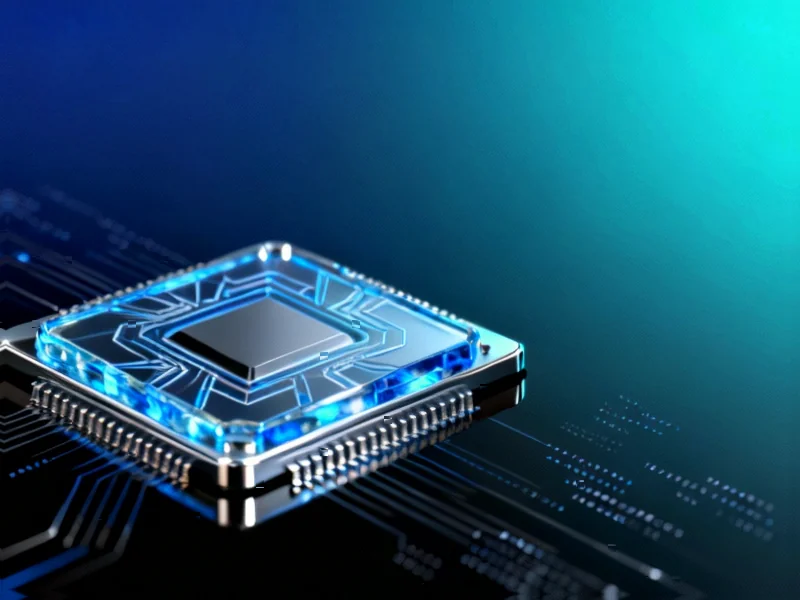The Hidden Challenge in Photonic Integration
For years, the photonics industry has been chasing the dream of deterministic soliton microcomb generation – a technology that could revolutionize everything from optical communications to sensing systems. While silicon nitride (SiN) photonic integrated circuits (PICs) have demonstrated remarkable capabilities with their ultralow losses and high nonlinearity, one persistent obstacle has remained: thermal effects that complicate reliable soliton formation. Recent research has uncovered a surprising culprit behind these thermal challenges and developed a solution that could transform how we approach integrated photonics manufacturing.
Table of Contents
Understanding the Soliton Microcomb Challenge
Soliton microcombs represent one of the most promising advancements in integrated photonics. These chip-scale optical frequency combs generate equally spaced spectral lines that serve as precision rulers for light, enabling applications across telecommunications, lidar systems, and quantum computing. The dissipative Kerr soliton (DKS) specifically has demonstrated exceptional versatility in system-level implementations., according to recent research
However, as industry researchers have discovered, the initialization process for these solitons has been anything but straightforward. “The fundamental issue lies in the thermal dynamics during soliton formation,” explains the research team. When attempting to initiate solitons, the transition from modulation instability combs causes an intracavity power drop that induces thermo-optic resonance shifts. This narrows the soliton existence range and creates an unstable operating window.
The Copper Contamination Breakthrough
What makes this recent discovery particularly significant is the identification of copper impurities as the primary source of thermal absorption in SiN photonic circuits. Even when using high-purity electronic-grade silicon wafers with non-detectable surface copper levels, researchers found that copper residing in the bulk silicon wafers diffused into the SiN layer during high-temperature processing., according to related coverage
“This was a classic case of hidden contamination,” the team notes. “The copper becomes trapped during annealing processes and creates absorption centers that generate heat when exposed to optical power.” This thermal absorption had been masquerading as an inherent material limitation rather than a solvable manufacturing challenge., according to recent innovations
Manufacturing Implications and Solutions
The development of copper-free PIC fabrication processes represents a paradigm shift in photonic integration. By eliminating these metallic impurities, researchers have achieved what was previously thought impossible: deterministic soliton generation in standalone integrated microresonators without complex laser tuning schemes.
Previous approaches to managing thermal effects included:, as detailed analysis, according to market developments
- Rapid laser tuning techniques
- Active feedback systems
- Pump laser modulation
- Dual-mode pumping configurations
While these methods could facilitate single-soliton generation, they introduced additional complexity and constrained the effective operating parameters. The copper-free approach fundamentally addresses the root cause rather than managing symptoms., according to expert analysis
Industrial Applications and Future Impact
The implications for industrial computing and communications are substantial. Reliable, deterministic soliton microcombs enable:
Advanced Optical Communications: The stability and precision of copper-free soliton microcombs could dramatically improve wavelength division multiplexing systems, increasing data transmission capacity while reducing power consumption and complexity.
Integrated Sensing Systems: For lidar and spectroscopic applications, the elimination of complex initialization procedures means more robust, field-deployable systems. The deterministic nature of soliton formation reduces calibration requirements and improves measurement consistency.
Quantum Computing Infrastructure: The generation of entangled photons and squeezed states becomes more practical with stable microcomb sources, potentially accelerating the development of photonic quantum processors.
The manufacturing community should take particular note of how this discovery demonstrates the importance of looking beyond surface-level purity metrics. As one researcher emphasized, “Sometimes the most significant breakthroughs come from addressing contamination sources we didn’t know were there.”
Looking Forward: The Path to Commercialization
While the research demonstrates compelling laboratory results, the transition to industrial-scale manufacturing will require careful process optimization. The elimination of copper impurities must be achieved without compromising other material properties or significantly increasing production costs.
Nevertheless, this breakthrough represents a critical step toward making soliton microcombs practical for widespread deployment. As the photonics industry continues to push toward lower losses and higher integration densities, addressing fundamental material challenges like copper contamination will separate leading-edge technologies from laboratory curiosities.
The successful demonstration of deterministic soliton access in compact, standalone integrated microresonators suggests that the scalability limitations that have hindered microcomb deployment may soon be overcome. For industrial applications ranging from telecommunications to advanced manufacturing, this could mark the beginning of a new era in integrated photonics.
Related Articles You May Find Interesting
- Unraveling the Molecular Mechanisms: How RNA Splicing Errors Drive Age-Related H
- Advancing Gait Analysis: A Comprehensive Inertial Sensor Dataset for Clinical Re
- Breakthrough Dual-Atom Catalyst Transforms Chemical Manufacturing Under Mild Con
- Advanced Risk Assessment Framework for Earth-Rock Dam Safety Using Element Failu
- AI Breakthrough: How Attention Mechanisms and Downsampling Are Revolutionizing C
This article aggregates information from publicly available sources. All trademarks and copyrights belong to their respective owners.
Note: Featured image is for illustrative purposes only and does not represent any specific product, service, or entity mentioned in this article.




js4g1z